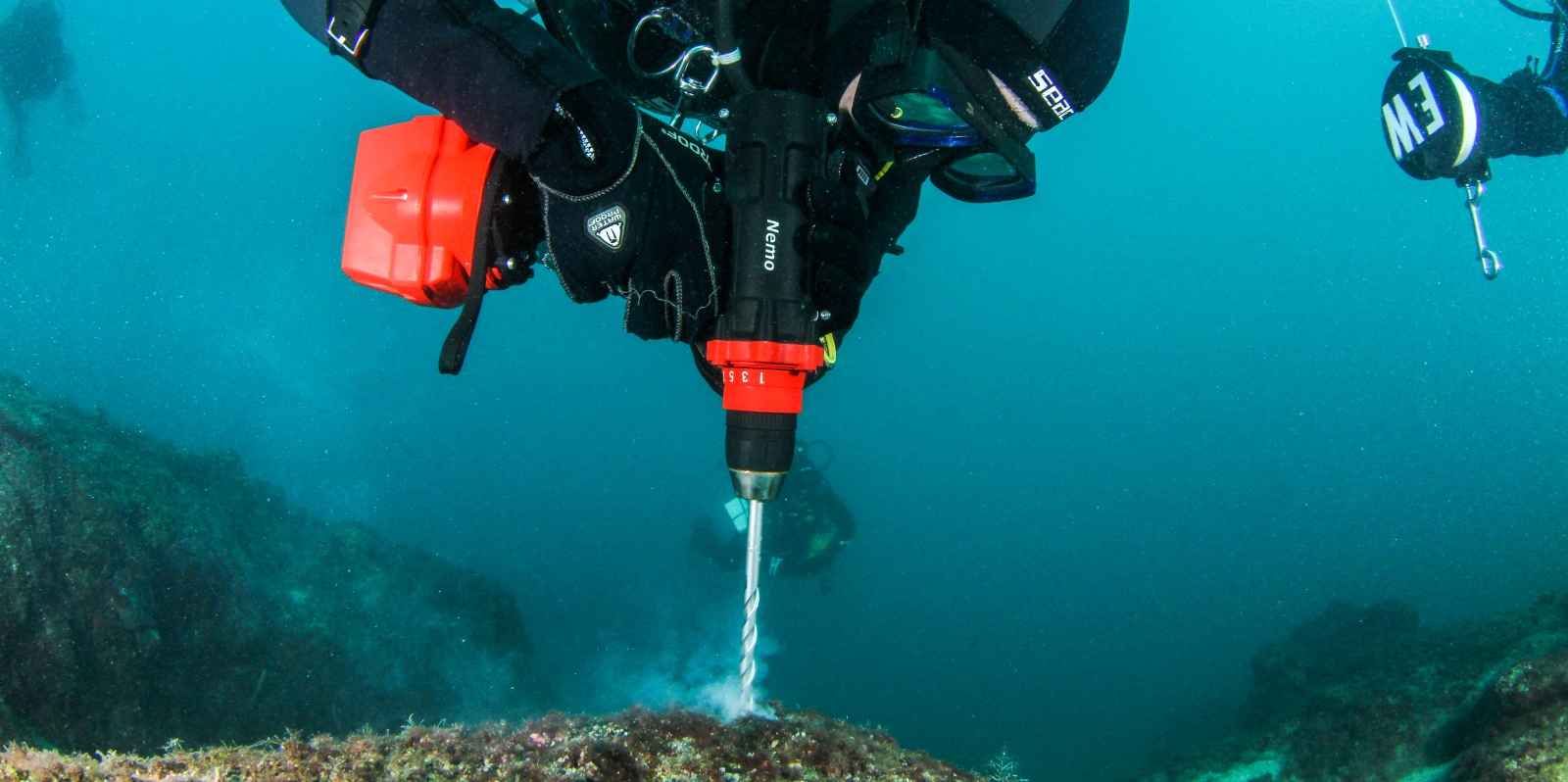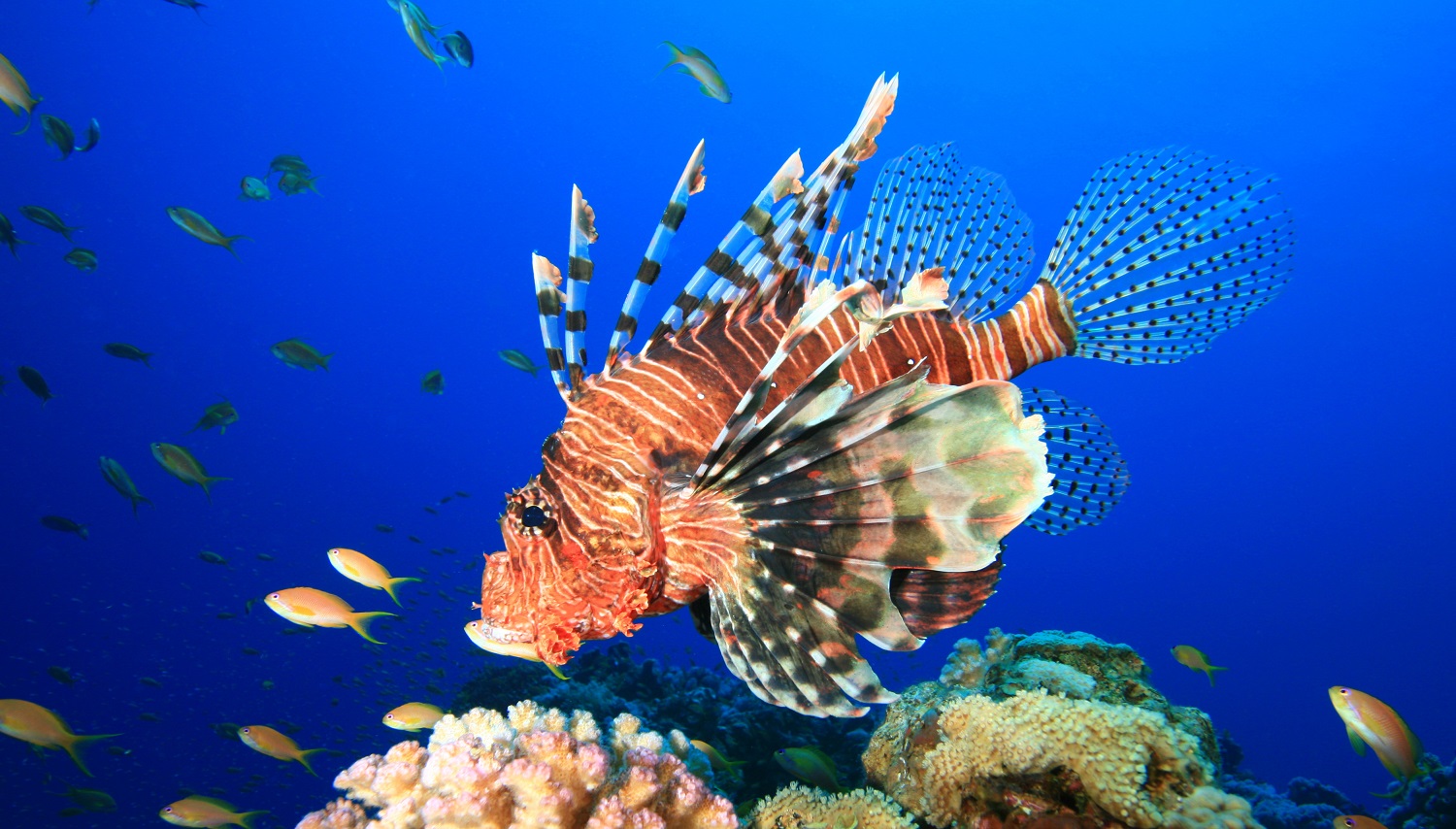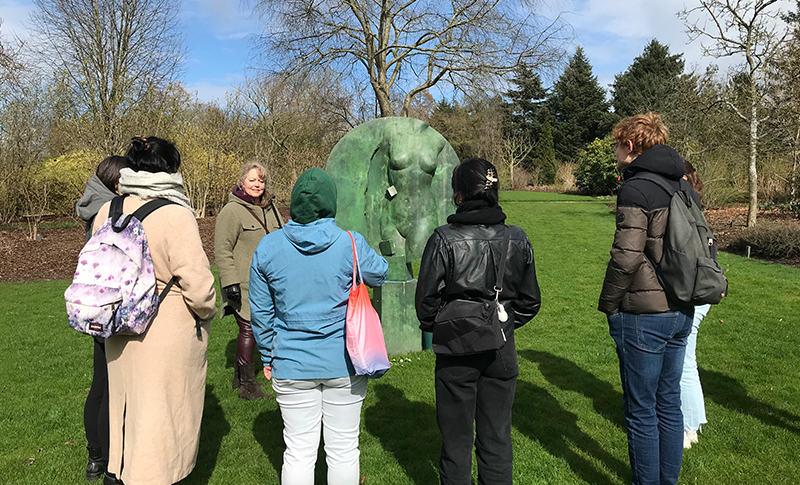Underwater scientific research is a specialization in its own right. And now there’s a dedicated module on the subject, as this year WUR has become the first university in the Netherlands to offer a Scientific Diving course.
So there you are, shivering away in Croatia. After yet another dive, you want to clean your equipment, but the buckets of water have frozen again. Normally it is between 13 and 18 degrees here in February, but the students taking the first practical Scientific Diving course are out of luck: this year it is freezing. Besides being cold, this also causes extra work: the equipment has to be thawed out in the morning before the first dive, for instance. But the bleak conditions haven’t stopped the students from getting into the water several times a day.
And they don’t have much choice: they have 10 days to master the ins and outs of underwater research. Doing scientific research is often more difficult underwater than above it. The students practise a range of different techniques and research methods: from biodiversity analyses to archaeological excavations, and from underwater drilling to navigating. For example, if you need to apply force while drilling underwater, you have to hold yourself to a rock and use your flippers actively. And navigating underwater is difficult because GPS doesn’t work there.
Strange
Scientific diving is so complex that it is really a bit strange that there ’wasn’t a course on it already, says course coordinator Rosa van der Ven, a researcher in the Marine Animal Ecology Group. ‘If you are going to do an internship or thesis, you often have to take all sorts of preparatory courses on laboratory techniques, fieldwork techniques and so on. But there was nothing for students who want to do underwater research, whereas there are very precise requirements for scientific work underwater.
By undergoing training, students learn to work more safely and efficiently and the scientific output improves.’
Everyone got chilblains; it was tough going
This gap in the curriculum had long vexed Tinka Murk, professor of Marine Animal Ecology and a sports diving instructor herself. ‘The only requirement we were allowed to impose on students was that they had a sport diving certificate and had done a minimum number of dives,’ Murk says. ‘That doesn’t give nearly as much of a guarantee that they can dive safely and competently as a European Scientific Diving certificate. And more and more European countries are already requiring this of students arriving for internships.’
With her colleagues’ support, Murk went into action and the first theoretical course in Scientific Diving started last September. Van der Ven: ‘But practice is also needed: this isn’t dry theory – literally.’ So in February, she left for Croatia for the first edition of the practical course, together with Erik Wurz, a researcher at the Marine Animal Ecology Group and Dive Safety Officer at the Animal Sciences Group, and four students.
Not a diving course
Both the theory and practical courses are available to a wide range of participants, says Diede Maas, researcher at the Marine Animal Ecology Group, who coordinates the course together with Van der Ven. ‘Everyone is welcome, from undergraduates to Master’s students and from PhD students to professionals. We do this because this is the only course on scientific diving on offer in the Netherlands.’ But course applicants are expected to have the necessary diving experience, says Maas. ‘It is not a diving course; it is explicitly about underwater research techniques.’ Over 10 days, students learn to apply the most common underwater research techniques. Van der Ven: ‘Laying a transect (a path along which you count and record occurrences of the objects of study, ed.), using a baseline to see where different items are found on the seabed, making biodiversity analyses, taking samples, determining positions, and so on. We offer a wide range of techniques that can be important for different aspects of underwater research. Students need to learn to use these techniques in a way that is scientifically sound.’
Playbook
Back to chilly Croatia, where Erik Wurz – the lecturer with the most scientific diving experience – is in charge. Much of the Scientific Diving course takes place on dry land, he explains. ‘You cannot talk under water.
Suddenly jars turned up – a Roman treasure trove
This meant that we needed to do proper field drills on land before we would go under water. During these drills, you do everything exactly the way you do it underwater, but then on the land, so everybody knows what to do. This is also the time to ask questions and to make sure everyone knows the playbook. Under water you can only communicate certain details, like “stick to the sequence” or “write this down”.’
Wurz got a Master’s degree in Marine Biology at the University of Rostock in Germany. ‘I chose that university because they offered a scientific diving course. It was a really extensive programme: all participants had to do 70 dives.’ Wurz used the scientific skills he acquired there for his thesis research on cold-water coral in Patagonia (Chile). After graduating, he worked for an organization specializing in technical diving, where he developed his skills in teaching scientific diving. In Wageningen, Wurz obtained his PhD for research into deep-sea sponges.
Treasure hunt
‘On the second day in Croatia, we had to use lines to mark out a grid on the seabed,’ says Master’s student Anouk Langerak (Aquaculture and Marine Resource Management and Biology). ‘We had an extra gas tank with us that we used as a kind of vacuum cleaner: a PVC tube was attached to the gas tank via a hose. If you let air into the tube through that hose, you vacuum up sediment. So we vacuumed the seabed prior to doing excavations. Suddenly, jars turned up – a Roman treasure trove, which happened to be right where we were doing research! Later it turned out that the teachers had hidden them there.’
Langerak had quite a bit of diving experience before she started the Scientific Diving course, she says. ‘I started out as a recreational diver – so mainly looking at fish. Later I got certified as a rescue diver. When I saw that this course was being taught for the first time, I knew I had to do it, because it will help me when I want to dive during my internship abroad and also later in my career as a marine biologist.’
Putting research techniques into practice makes you a better diver, says Langerak. ‘It improves your diving technique as well: having constant control over your posture and buoyancy. If you are working at a considerable depth and just shoot up to the surface, it can be dangerous. You have to trust your team and maintain good communication underwater. Unexpected things can always take you by surprise.’
Lionfish
Fellow student Davide Bottacini recently became a PhD student in the Behavioural Ecology chair group. He is researching the lionfish as an invasive predator. ‘In different parts of the world, people try to control the invasive lionfish population.’ In field work in Cyprus and Greece, Bottacini wants to look at the impact of the lionfish on the local biodiversity. ‘That’s done by diving and surveying the fish biodiversity.’ He also wants to study how lionfish hunt. ‘The lionfish is a slow-moving fish with venomous spines.
It’s not a diving course; it’s about underwater research techniques
As they swim slowly, it is a mystery how they catch their prey. One hypothesis is camouflaging, but it is not really clear yet. I want to put lionfish and their prey in a cage under water, to study how they interact.’
The Scientific Diving course came just at the right time for Bottacini, who started his PhD project in January. ‘I was already a relatively experienced diver, but almost everything I learnt on this course was new to me. Erik has a lot of knowledge and experience and knows how to convey it to students. Thanks to this course, I now have the practical experience to carry out the underwater research I’ll be doing soon safely.’
Sleap, dive, eat, repeat
Due to the full course programme, the students didn’t get to see much of Croatia. Langerak: ‘We only saw the diving shop and the house where we slept. The routine was the same every day: sleep, dive, eat, sleep, dive, eat.’ The first days were particularly tough because of the cold. ‘Everyone got chilblains, and it was tough going. But we were also selected for that: the students who went along had to have experience of diving in cold water. Fortunately, it did warm up a bit later that week.’ Bottacini: ‘Because of the cold, we had to wear gloves underwater. That does make it a bit trickier than underwater research in the tropics. But it still went fantastically.’
The teachers too look back on the first course with satisfaction. ‘When we announced this course, many students showed interest, but we can only take four at a time,’ says Van der Ven. ‘The supervision is very intensive and the programme is tough, with long days. The students who ended up joining us were very motivated.’ Wurz: ‘It was unusually cold for the time of year, which made everything a lot harder. Still, the students held up well – they were indomitable. Fortunately, the weather improved after four or five days. If you can warm up in the sun after a dive and walk around in a T-shirt, it makes everything easier, like doing two dives a day, for example.’
The Scientific Diving practical course will be run for the second and third time in May and June. Because of the intense supervision, only four students can take part in each course.

 Drilling underwater. Photo Erik Wurz
Drilling underwater. Photo Erik Wurz 

